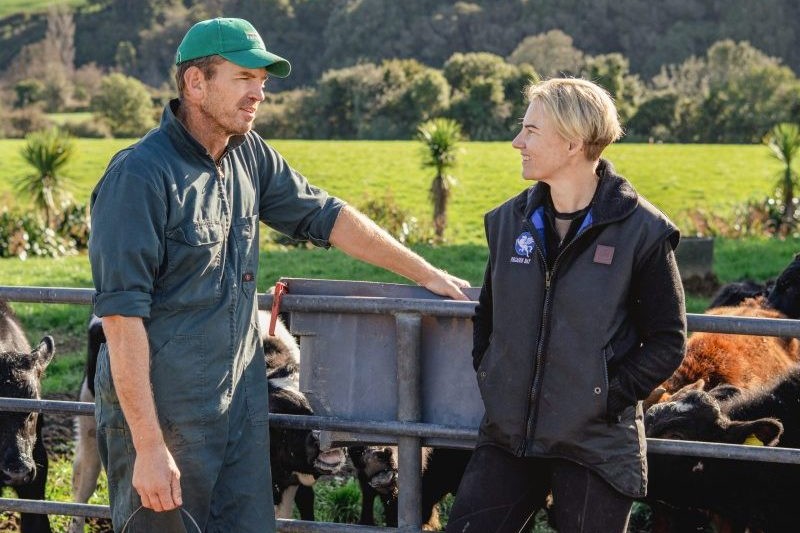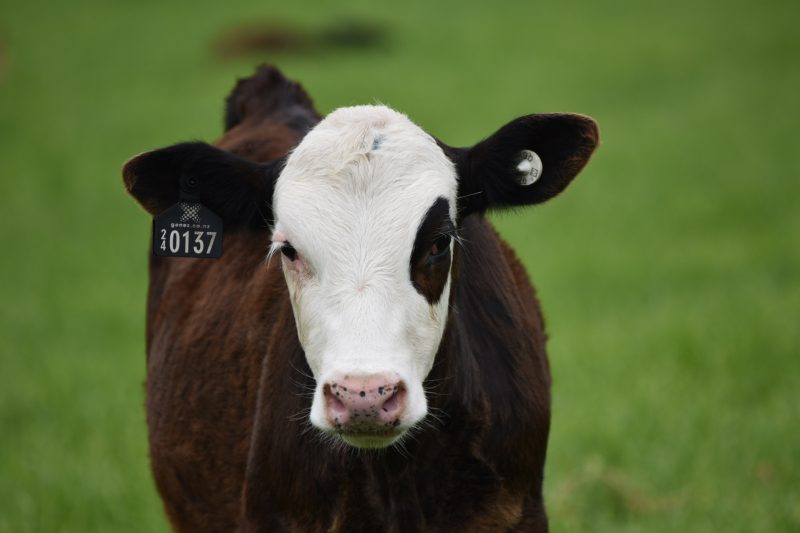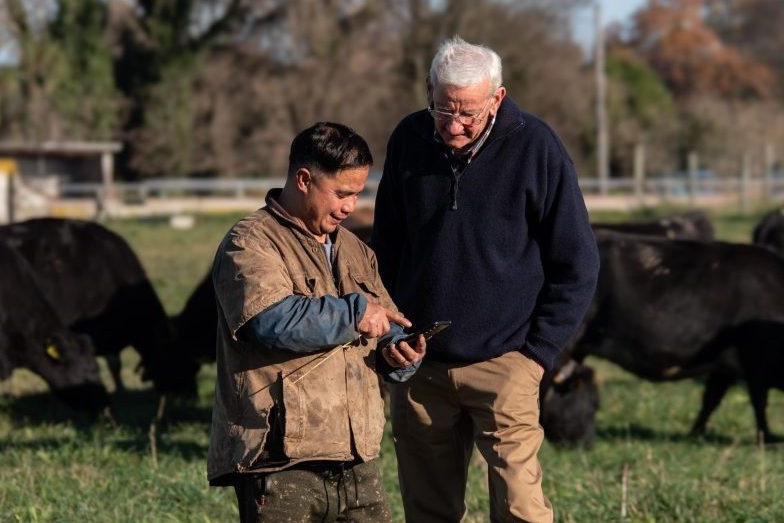Purposeful lives for calves
Calving ease and the animal’s value through the chain to end market are major considerations in the drive to reduce bobby calf numbers for Waikato’s Owl Farm. Louise Hanlon reports.

Dairy farmers are under increased pressure to identify alternative strategies for managing surplus calves.
Solutions to meet multiple requirements include: producing a marketable product that provides a viable financial return, having a minimal impact on their main source of income – milk production – and acceptability to local and international markets.
Attendees at Owl Farm’s recent Focus Farm day in September learned about their drive to reduce bobby numbers and the reasoning behind the ongoing evolution in their approach.
“Calves are a product of the industry and we need to add value to them,” Owl Farm Demonstration Manager Jo Sheridan says.
“Like all aspects of Owl Farm’s continuous improvement journey we explore an avenue, then we analyse the data, see how successful it has been, and identify where the next opportunity is for us.”
The Focus Farm day participants identified a number of key considerations when selecting a breeding policy for non-replacement calves.
Dam calving ease was of primary importance; they suggested it should make up 50% of the selection decision, followed by the marketability of the calf, and gestation length. They also suggested a range of other more minor considerations, such as calf temperament and resilience.
LIC (Livestock Improvement Corporation) was also present at the day and agreed that calving ease was of primary importance, but they also emphasised the importance of considering an animal’s value throughout the whole chain to the end market, while achieving maximum value out of low production cows. They noted the challenge of balancing dairy farmer versus beef farmer requirements.
Beef farmers require an animal that is a good converter of resources into carcase weight. With this in mind, they suggested including carcase weight and the feed-to-gain ratio into breeding considerations.
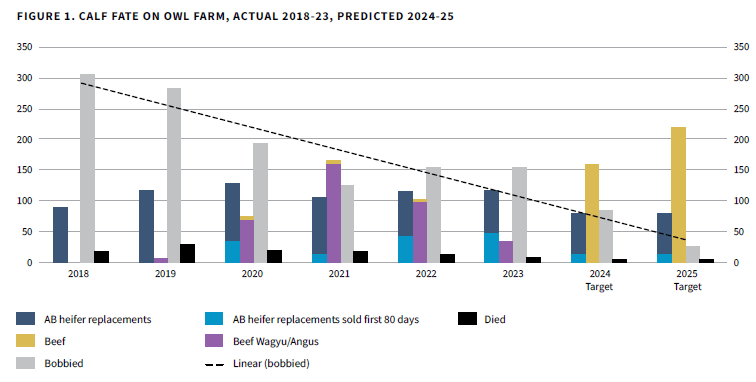
Owl Farm started on the path of creating purposeful lives for all calves and reducing bobby calf numbers with the introduction of sexed and Wagyu semen in 2018 (see Figure 1). They have also used all AB since 2018. There were multiple drivers for this change; however, a key factor was removing the risk to staff and to the many farm visitors.
Sexed semen was used on the highest BW cows to produce a higher proportion of heifer calves; Owl Farm has a goal of being in the top 5% BW nationally and they have achieved this goal as the herd is in the top 3%.
They selected Wagyu semen as there was a good market for the calves. They locked in profitable contracts with the calves going on to a rearer at 13 days old.
The combination of these strategies increased the purposeful lives of their calves from 34% in 2018 to 70% in 2021. However, since then they have reconsidered their policy.
“The initial contract for the Wagyus returned us $220 per calf, but they have become less profitable with contract returns falling to $150 per calf,” Jo says.
“Wagyus did provide the benefits of being easy to calve and rear, but their colour made them hard to distinguish from the crossbred dairy calves. Also, they had a longer gestation (by six days) and this impacted on the herd’s calving pattern.”
When formulating alternative options they considered the unique characteristics of the farm: their high BW cows calve early which gives them a one to two week advantage in the market; there is the possibility of growing calves well onfarm on their chicory crop (proven in previous years with their replacement heifers). They also need to consider their exposure to the public i.e. onfarm visitors, and proximity to urban centres; opportunities for student learning; and their demonstration farm status, where their experiences are shared with others in the industry.

Rearing surplus high BW heifer replacements is no longer a sustainable option. The cost of rearing these calves was equivalent to the return they could achieve ($250/calf). Additionally, there has been a decline in demand for these calves as the number of farmers using sexed semen has increased and the national herd number is now static. At this point they have decided they will trial the following policy this season (see Table 1).
Their aim is to create a premium, trusted product and sell most of their calves on contract to local growers or lifestylers, with any unsold calves going onto the open market, but there is an option to run some calves on their chicory crop and measure the results of this.
There will be costs associated with managing local sales themselves and carrying calves for longer, including buying a transport trailer (about $10,000-$12,000). They will need to consider the impact of the changes on the calf rearing facility and staff, due to the additional calf numbers and extended duration of rearing.
Jo notes that they will continue to evaluate their purposeful lives policy to ensure it best matches their goals and community expectations.
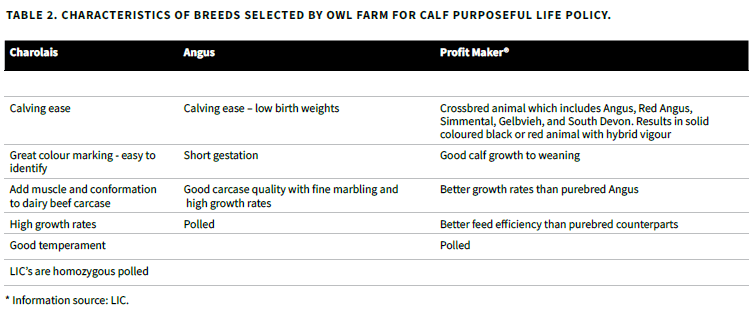
“When analysing this season’s strategy we will monitor factors like calving ease, marketability, and sustainability. In the future, we may grow calves for longer onfarm. However, any option should not impact on the primary purpose of our current system – turning grass into milk.
“Every farmer has a unique advantage, they need to look at what it is. Is it their cows, the people around them, the land they have access to? They need to find their own personal journey forward.”


